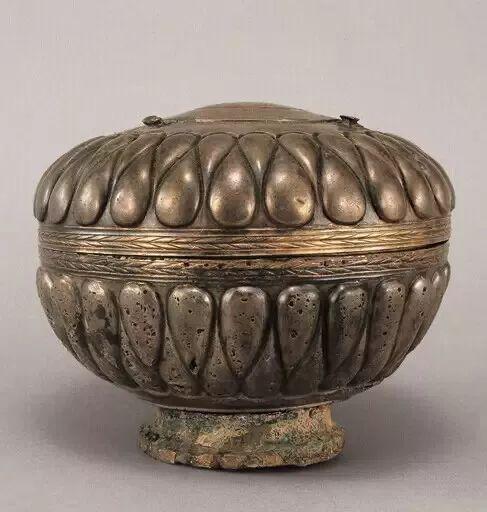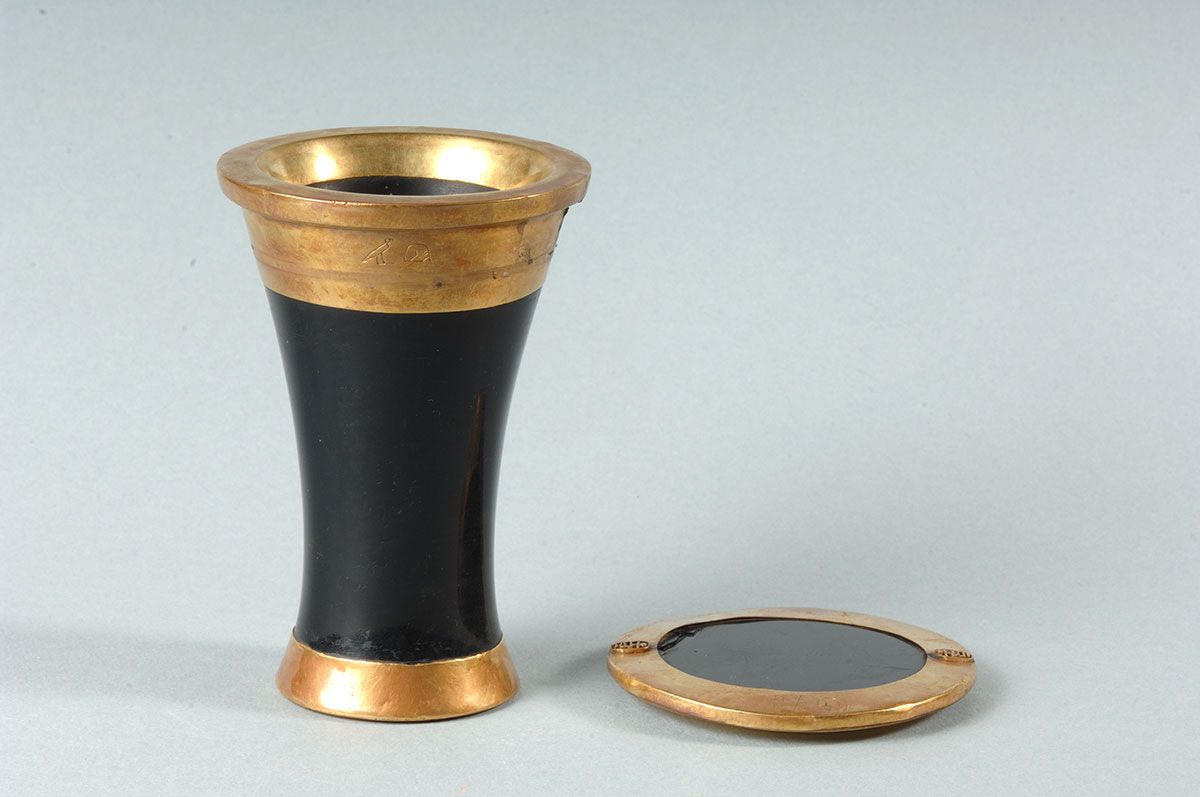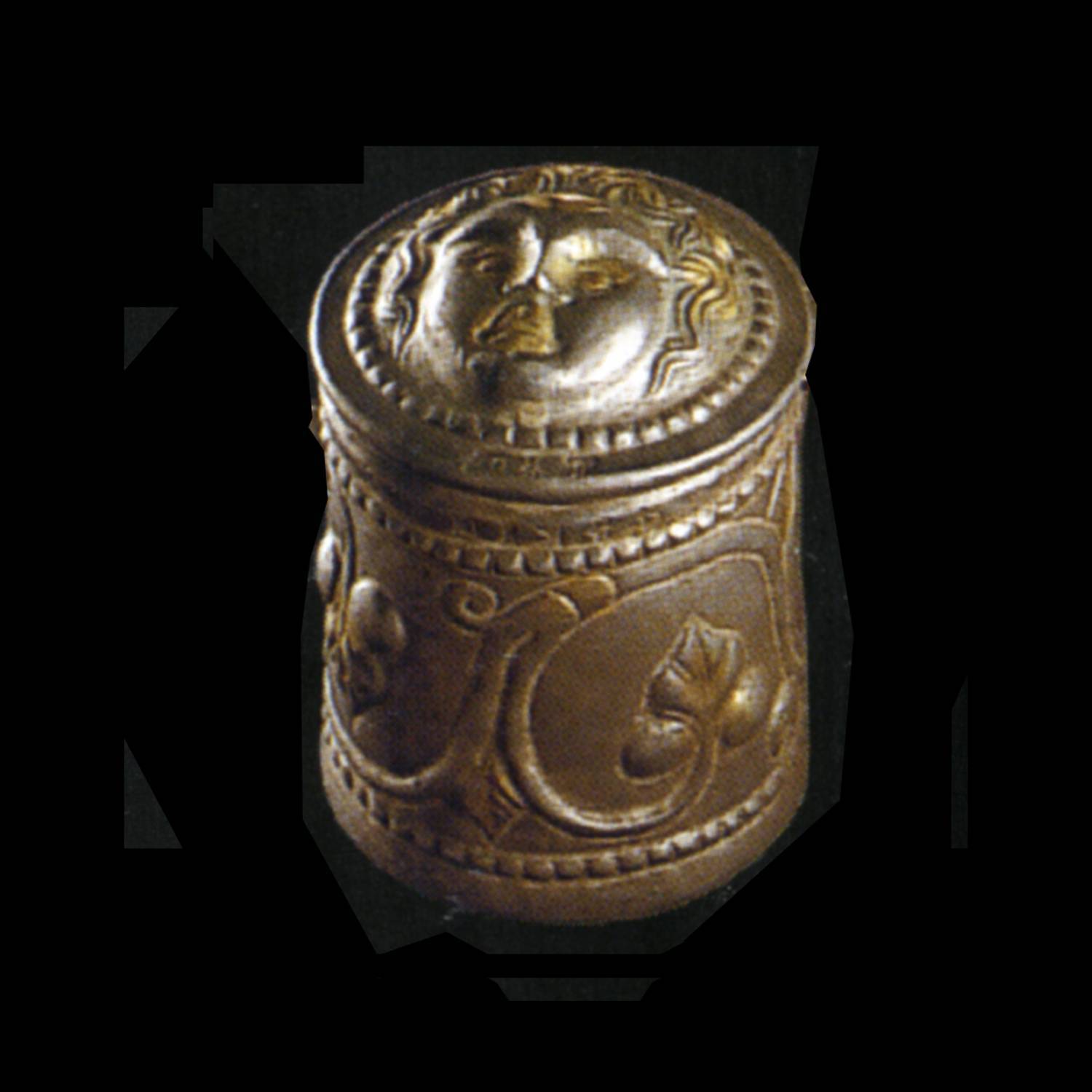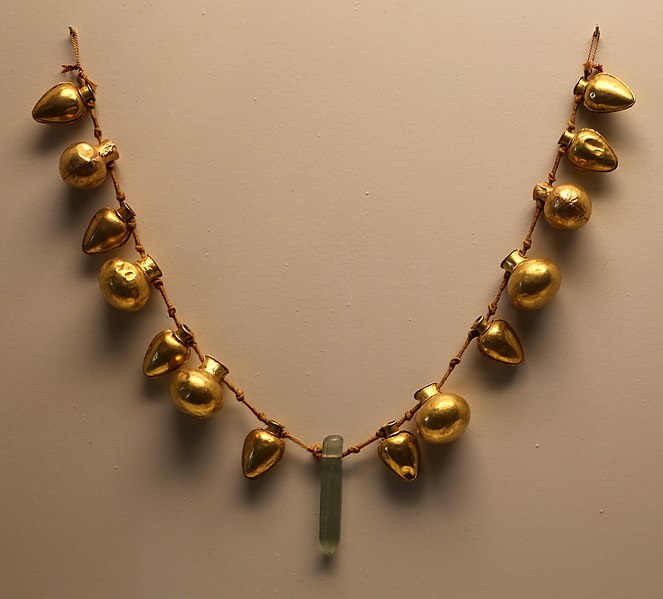A Sasanian silver cosmetic box with lid, dated to 6th-7th century. Sold on Christie’s auction in 2001 [auction]
EXHIBITED Museum of Fine Arts, Boston, 1970
diameter along the base 8.6 cm
high excluding the lid 3.8 cm
“The circular box with slightly in-sloping walls and flat base, the exterior decorated in relief with scrolling vines, the branches terminating with stylized leaves and grape bunches, the vines inhabited by two men and wild beasts, the men each in profile to the right, one wearing loose trousers, his right hand extended to the vine above, the other wearing a short kilt, lifting a large bunch of fruit, among the beasts are a seated roaring lion, a leaping leopard, a standing lion with its head turned over its shoulder, and a small bear feeding on the fruit, with a shallow groove below the rim, traces of gilding visible throughout, the lid a disk with shallow walls, and four heart-shaped depressions radiating around a central circular depression, incised between each heart is a quadruped leaping over a schematic device, including a mule, a horse, a cow and a camel”
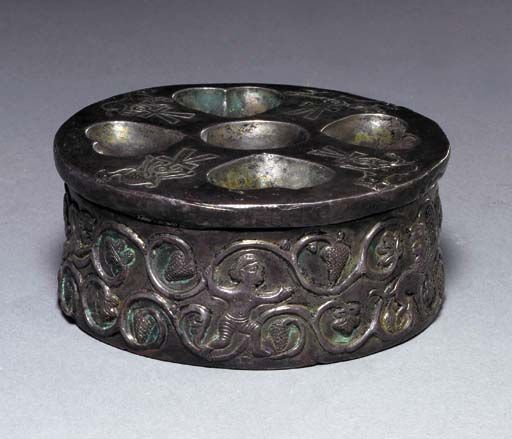
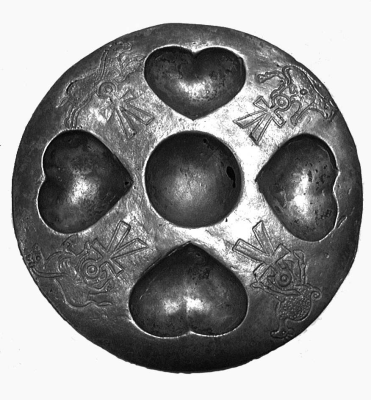
A lid with a double-legged ankh symbol is described by Abolala Soudavar:
“From coinage to rock reliefs, the double-legged ankh sign
was clearly used as an auspicious symbol of authority. By contrast, its quadruple presence on a Sasanian cosmetic box that recently appeared on the art market can in no way be connected to kingship or authority, especially since all four emblems are tightly squeezed into the bellies of four quadrupeds”
“Atop this box are four heartshaped receptacles, with an image-label next to each designating the substance that went in them; an unlabelled round hole was placed in the middle for mixing the ingredients of the adjacent receptacles. Four animals appear in these image labels: A horse, a cow, a camel and a fourth quadruped that seems to be a musk deer. Their ankh sign, though, had a purely utilitarian function; it was supposed to make them more meaningful. Indeed, musk is a substance that is extracted from a gland under the belly of the musk deer”
Abolala Soudavar
Discrediting Ahura Mazdā’s Rival, The Original Iranian Creator God “Apam Napāt” (or Apam Naphāt?) https://www.academia.edu
Heart, flower, leaves motif

